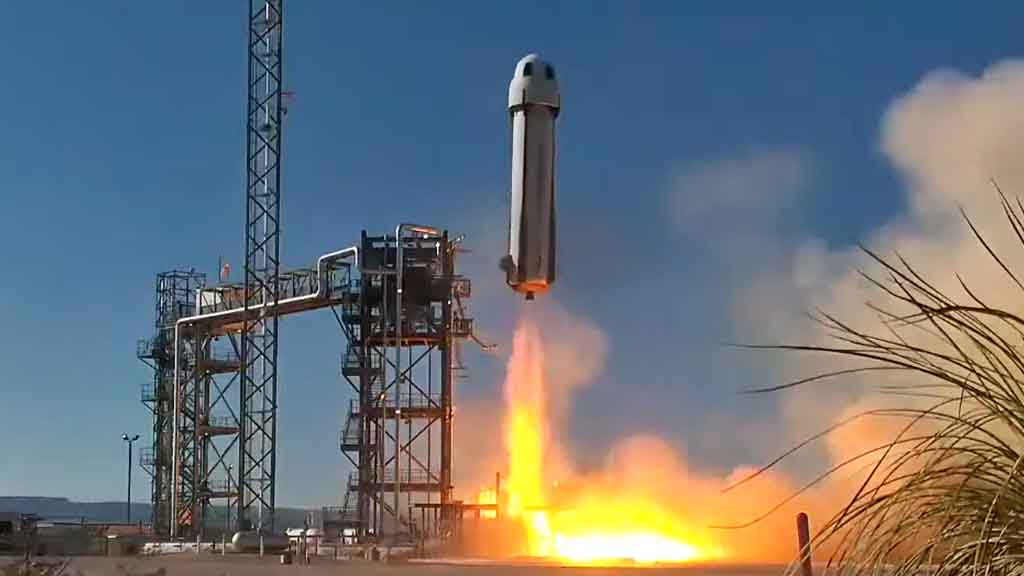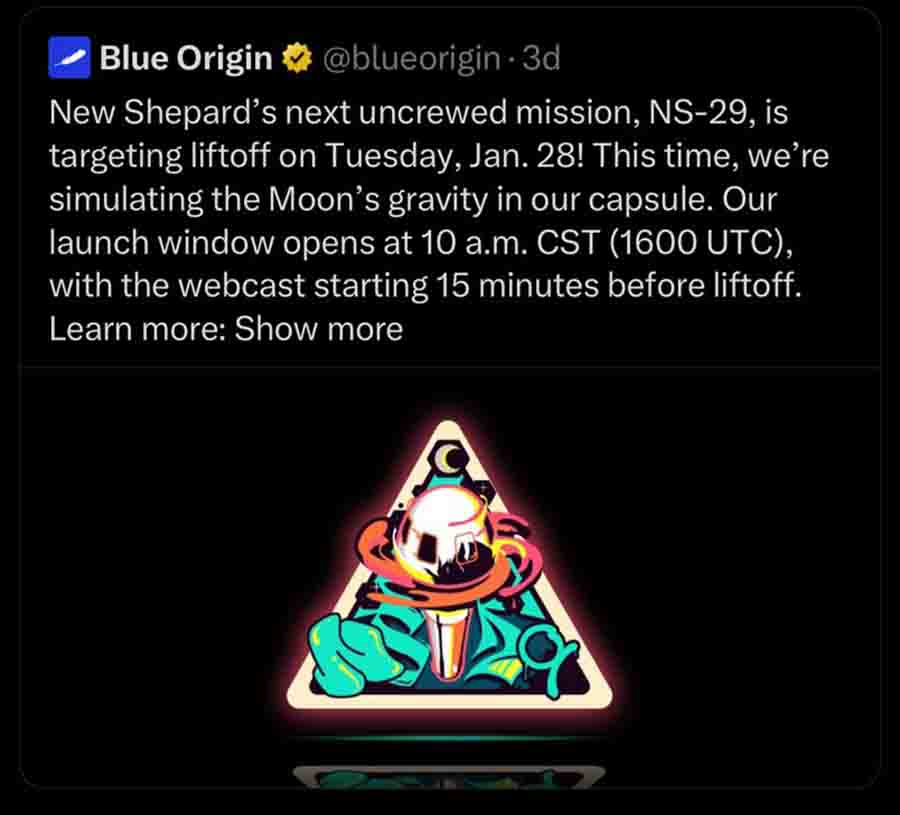Blue Origin
Blue Origin announces New Shepard 29 uncrewed mission with lunar gravity experiment

Blue Origin has announced its New Shepard Flight 29, which will carry new experiments to simulate the Moon’s gravity for future missions to Earth’s natural satellite.
29th New Shepard rocket is targeting Tuesday, January 28, at 10:00 AM CST/1600 UTC from Launch Site One in West Texas. The company will broadcast this launch on its social channels including YouTube and X.
Update: Blue Origin has scrubbed initial launch date on January 28 due to unfavorable weather and issues in booster’s avionics.
“We are scrubbing today’s launch. In addition to thick clouds we’ve been tracking all morning, we also encountered an issue related to the booster’s avionics. New launch target forthcoming.”
According to Blue Origin, the new mission will mimic the Moon’s gravity and fly 30 payloads including one exclusive payload to test lunar-related technologies.
The lunar gravity experiment is being conducted with NASA and experience two minutes of lunar gravity forces. This flight test will carry six lunar technologies:
- In-situ resource utilization
- Dust mitigation
- Advanced habitation systems
- Sensors and instrumentation
- Small spacecraft technologies
- Entry descent and landing
The other experiments aim to decrease the launch cost for Blue Origin’s customers and improve vehicle stability.

New Shepard 29 mission announcement (Credit – Blue Origin)
Gravity Test
The space launch vehicle maker has explained this test and its implications. The New Shepard will use its Reaction Control System (RCS) to spin up to 11 revolutions per minute. The rotation will simulate Earth’s one-sixth gravity at the midpoint of the crew capsule lockers.
This simulated lunar gravity will enable payload companies to improve their understanding of the lunar surface and environment.
It’s revealed the Moon’s gravity could only be simulated for a few seconds at a time via a centrifuge drop tower or for around 20 seconds aboard parabolic flights.
Payload Details
Aside from the lunar gravity experiment, the New Shepard Flight 29 will also fly 29 payloads. One of these will fly on the booster to get exposure to the ambient space environment.
More than half of these will be supported by NASA’s Flight Opportunities program, managed by the Space Technology Mission Directorate.
Bleul Origin’s In-Space Systems business, Honeybee Robotics has four payloads to test penetrating, excavating, and processing lunar regolith technologies.
This mission will also carry thousands of podcasts from Club for the Future, Blue Origin’s STEAM-focused nonprofit organization. Check more details on New Shepard flight 29 below.
(Source)












